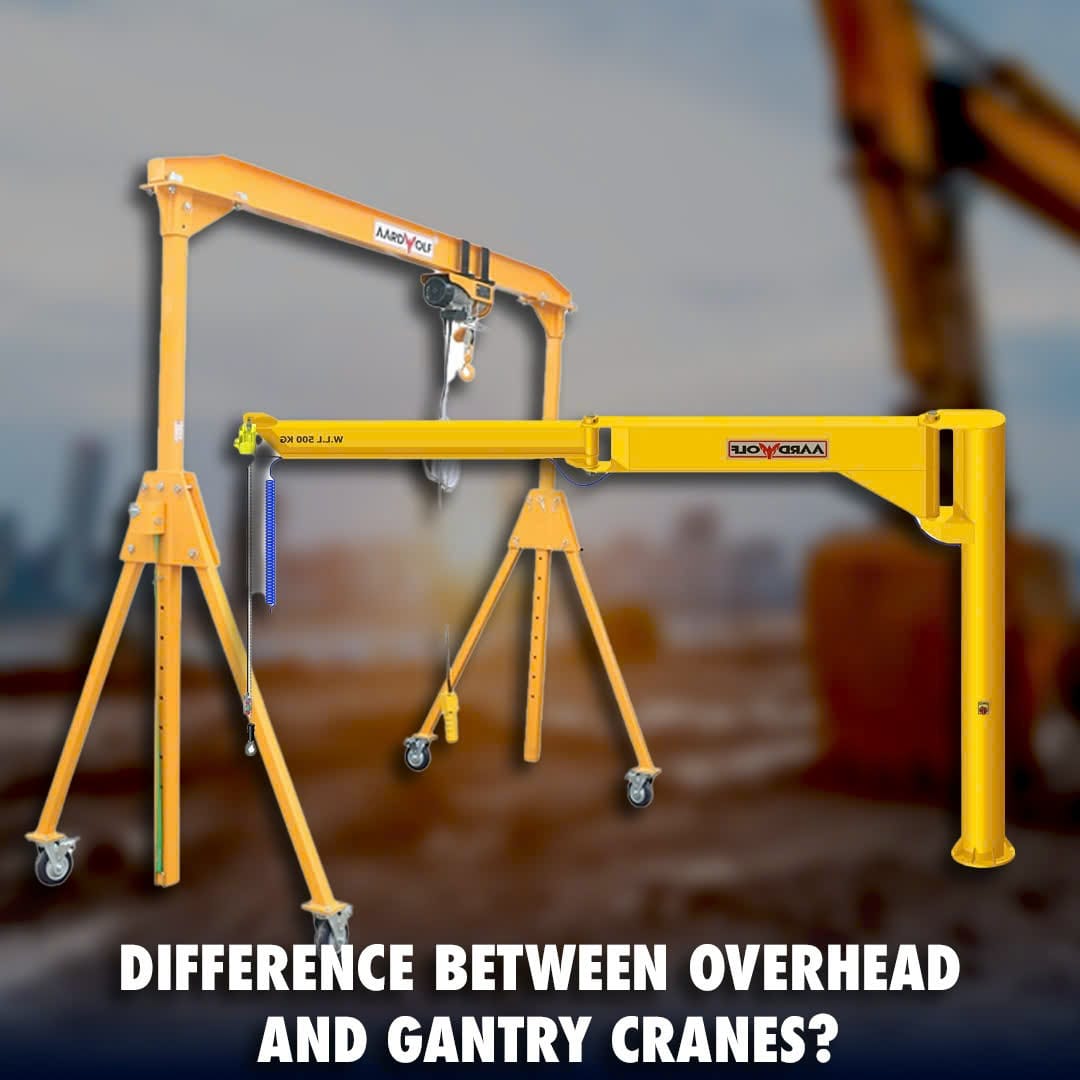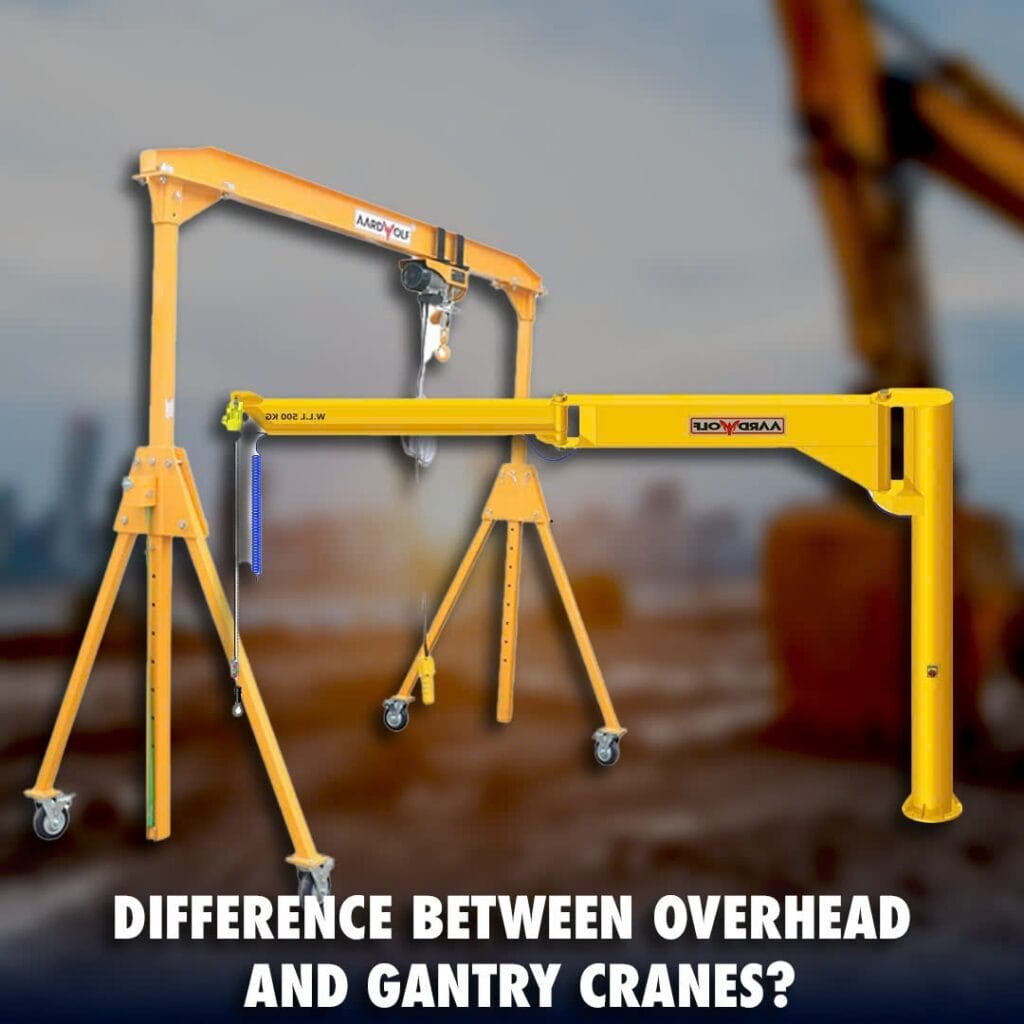
Gantry cranes are a critical component in modern material handling, providing robust, efficient, and flexible lifting solutions across a wide range of industries. As industrial operations continue to evolve, understanding the differences between various crane systems has become essential for businesses looking to optimize productivity and safety. In this article, we will explore the distinctions between overhead gantry cranes and other types of gantry cranes while delving into the many facets of these versatile machines. We will also highlight specialized variants, such as gantry crane portable systems and gantry crane mobile models, to help you make informed decisions for your operational needs.
Gantry cranes are a critical component in modern material handling, providing robust, efficient, and flexible lifting solutions across a wide range of industries. As industrial operations continue to evolve, understanding the differences between various crane systems has become essential for businesses looking to optimize productivity and safety. In this article, we will explore the distinctions between overhead gantry cranes and other types of gantry cranes while delving into the many facets of these versatile machines. We will also highlight specialized variants, such as gantry crane portable systems and gantry crane mobile models, to help you make informed decisions for your operational needs.

Overview of Gantry Cranes
Gantry cranes are large-scale lifting machines built on a gantry—a robust framework that supports the hoisting mechanism and allows for movement along a predetermined path. Unlike fixed tower cranes, gantry cranes offer mobility and flexibility, which are crucial for operations that require frequent repositioning of heavy loads. Their design can vary greatly, from fixed installations in manufacturing plants to portable and mobile models used on dynamic construction sites and shipping yards.
The term gantry crane covers various configurations, including:
- Gantry Crane Portable: Lightweight models that can be quickly assembled and disassembled for temporary setups.
- Gantry Crane Mobile: Cranes mounted on wheels or tracks that can move easily around a worksite.
- Overhead Gantry Crane: Systems typically installed within a building or on fixed rails to provide precise lifting and positioning.
Modern gantry cranes combine high-strength materials like steel or aluminum with advanced control systems to offer safe, efficient, and adaptable material handling solutions. For instance, if you’re considering a versatile solution for your business, you might explore the benefits of a gantry crane designed to meet diverse operational demands.
Understanding Overhead Gantry Cranes
Overhead gantry cranes are a specific type of gantry crane that operates on a fixed track system. These cranes are commonly used indoors in manufacturing plants, warehouses, and other facilities where space is at a premium and precise control is essential.
Key Features of Overhead Gantry Cranes
- Fixed Installation: Overhead gantry cranes are installed on fixed rails, typically along the ceiling or in designated industrial areas.
- Precision Operation: The design of an overhead gantry crane ensures that heavy loads can be moved with high accuracy. This is crucial for tasks that demand precise placement, such as assembling components on a production line.
- Enhanced Safety: With built-in safety features like load sensors, emergency stops, and advanced control panels, overhead gantry cranes minimize the risk of accidents and improve operational safety.
While overhead gantry cranes are perfect for controlled indoor environments, other gantry cranes—such as mobile and portable models—offer benefits in terms of flexibility and ease of relocation.
What Are the Differences Between Overhead and Other Gantry Cranes?
When deciding on the right crane for your operations, understanding the differences between overhead gantry cranes and other types of gantry cranes is critical. Here, we explore several key factors that set them apart.
Structural Differences
- Overhead Gantry Cranes:
These systems are usually fixed to a specific track system, providing stable and precise operation. They are best suited for environments with well-defined operational spaces. - Other Gantry Cranes:
Other types of gantry cranes, including gantry crane portable and gantry crane mobile models, are designed for flexibility. Their structure often allows for quick assembly and disassembly, making them ideal for temporary or shifting work environments.
Mobility and Installation
- Fixed vs. Mobile:
They designed overhead gantry cranes for permanent or semi-permanent installation, providing a stable lifting platform. In contrast, gantry crane mobile systems are mounted on wheels or tracks, allowing them to be easily moved around a worksite as needed. - Ease of Relocation: This is particularly beneficial in industries where the worksite layout changes frequently, such as construction and shipping.
Application and Industry Use
- Overhead Gantry Cranes in Controlled Environments:
These cranes are predominantly used in fixed industrial settings where precision and reliability are paramount. They are ideal for manufacturing plants, assembly lines, and warehouses where consistent performance is required. - Versatile Gantry Cranes for Dynamic Environments:
Portable and mobile variants excel in dynamic settings, including construction sites and outdoor logistics hubs. Their flexibility and ease of movement make them a preferred choice for projects that require frequent repositioning or temporary setups.
Exploring Portable and Mobile Gantry Cranes
The evolution of gantry cranes has led to the development of systems that offer both mobility and versatility. Among these, gantry crane portable and gantry crane mobile models are particularly noteworthy.
Gantry Crane Portable
Portable gantry cranes are designed for quick deployment and flexibility. They constructed it from lightweight materials like aluminum, making them easy to transport and assemble without the need for permanent infrastructure. This design is especially useful in scenarios where time and space are critical factors.
Theirs designs with a portable design can be a game-changer for your operations, offering the perfect balance of strength and mobility. These systems are ideal for temporary installations on construction sites or industrial facilities that require a versatile lifting solution.
Advantages of a Portable Gantry Crane
- Rapid Assembly and Disassembly:
The design of a portable gantry crane allows for quick setup and teardown, reducing downtime and increasing operational efficiency. - Flexibility:
Its portability means with different locations as the needs of the project change. - Cost-Effective:
Without the need for permanent installation, a portable gantry crane helps lower setup costs while still delivering robust performance. - Adaptability:
Ideal for various applications, from construction to maintenance in manufacturing plants, this type of crane provides a versatile solution for diverse heavy lifting tasks.
For additional insights into how these systems compare with their fixed counterparts, you can check out this detailed resource on a portable gantry crane.
Gantry Crane Mobile
Mobile gantry cranes take portability a step further by offering enhanced maneuverability. These systems are mounted on wheels or tracks, which traverse different sections of a worksite with ease. They are particularly useful in expansive outdoor environments such as shipping yards and large construction sites.
Benefits of Mobile Gantry Cranes
- Enhanced Mobility:
With the ability to move effortlessly across a site, a gantry crane mobile system can cover larger areas and transport loads from one end of the worksite to the other without additional infrastructure. - Versatile Applications:
Mobile systems can operate in a variety of environments, making them suitable for projects where the operational landscape is constantly evolving. - Improved Efficiency:
The quick relocation ability of a mobile gantry crane minimizes downtime and maximizes productivity, which is crucial in fast-paced industrial settings.
Structural and Operational Comparisons
Understanding the structural and operational differences between overhead gantry cranes and other types of gantry cranes is essential for selecting the right equipment for your needs.
Structural Design and Engineering
- Overhead Gantry Cranes:
These cranes are typically integrated into a building’s infrastructure. Their fixed rails and robust framework are engineered for high precision and stability, ensuring consistent performance in a controlled environment. - Other Gantry Cranes:
Portable and mobile gantry cranes are designed with a focus on adaptability. They often feature modular components that can be reconfigured or relocated depending on the specific requirements of the job.
Installation and Setup
- Overhead Systems:
The installation of an overhead gantry crane requires significant planning and infrastructure development. This is feasible in facilities with a long-term need for fixed lifting systems. - Portable and Mobile Systems:
In contrast, a gantry crane portable or gantry crane mobile system can be assembled on-site with minimal setup time. This flexibility makes them an attractive option for temporary or rapidly changing environments.
Operational Efficiency and Safety
- Precision vs. Flexibility:
Overhead gantry cranes offer unparalleled precision, making them ideal for delicate operations in manufacturing and warehousing. However, the flexibility of portable and mobile gantry cranes cannot be understated—they offer significant advantages in terms of rapid repositioning and cost-effectiveness. - Safety Features:
Modern gantry cranes, regardless of their configuration, come equipped with advanced safety systems such as load monitoring, emergency stop functions, and operator control panels. These features ensure that whether you are using an overhead gantry crane or a mobile variant, safety remains a top priority.
How to Choose the Right Gantry Crane for Your Operations
Selecting the optimal gantry crane involves a careful evaluation of several factors, including the nature of your operations, the required load capacity, the installation environment, and budget constraints. Here are some steps to guide your decision:
- Assess Your Operational Needs:
Determine the specific requirements of your facility or project. Consider whether you need a fixed system like an overhead gantry crane for precision work or a flexible solution like a portable or mobile gantry crane to adapt to changing conditions. - Evaluate Load and Mobility Requirements:
Consider the maximum weight your crane needs to handle and whether your worksite demands frequent relocation. If mobility is key, a gantry crane mobile or portable gantry crane might be the best fit. - Consider Safety and Maintenance:
Examine the safety features offered by different crane systems and evaluate the ease of maintenance. Regular inspections, operator training, and adherence to load limits are critical factors that ensure long-term efficiency and safety. - Budget and Investment:
Factor in both the initial purchase cost and the long-term operational expenses. Portable and mobile systems often provide a cost-effective solution with lower installation expenses and greater flexibility.
Real-World Applications of Gantry Cranes
Gantry cranes have revolutionized material handling in many sectors. Their flexibility, precision, and robust design have made them indispensable in several industries:
- Manufacturing:
In production facilities, overhead gantry cranes provide precise control for assembling heavy components. - Construction:
Construction sites benefit greatly from the use of portable and mobile gantry cranes. Their ability to quickly assemble, disassemble, and relocate allows for efficient handling of heavy building materials and pre-fabricated components. - Shipping and Logistics:
Ports and shipping yards use mobile gantry cranes to load and unload containers efficiently. Their robust design ensures they can handle continuous, heavy-duty operations in challenging outdoor environments. - Energy and Infrastructure:
From installing large turbines to handling oversized components in power plants, gantry cranes provide the necessary lifting power and precision.
Future Trends in Gantry Crane Technology
As industries continue to demand more efficient and adaptable material handling solutions, gantry crane technology is evolving. Key future trends include:
- Increased Automation:
Integration of automation and smart control systems is transforming how gantry cranes operate. These advancements aim to reduce human error and enhance precision, whether in overhead systems or mobile setups. - IoT Integration:
The use of Internet of Things (IoT) technologies allows real-time monitoring of load conditions, crane performance, and maintenance needs. This data-driven approach helps optimize operations and predict potential issues before they cause downtime. - Eco-Friendly Designs:
Manufacturers are increasingly focusing on creating energy-efficient and environmentally friendly gantry cranes. Lighter materials and innovative power systems to reduce the carbon footprint of these machines while maintaining high performance. - Modular and Customizable Systems:
The demand for tailored solutions is leading to the development of modular gantry cranes that can be easily reconfigured. This trend allows businesses to adapt their material handling equipment quickly in response to evolving operational requirements.
Conclusion
Gantry cranes, in all their forms—from the precise overhead gantry crane to the flexible gantry crane portable and mobile variants—play an indispensable role in modern industries. Understanding the differences between overhead and other types of gantry cranes is crucial for selecting the right solution to meet your specific operational needs.
The fixed installation of overhead gantry cranes makes them ideal for controlled environments such as manufacturing plants and warehouses where precision and reliability are paramount. On the other hand, portable and mobile gantry cranes offer unparalleled flexibility, rapid deployment, and cost-effectiveness, making them well-suited for dynamic construction sites, shipping yards, and temporary installations.
By carefully assessing your operational needs, load capacities, and mobility requirements, you can make an informed decision that enhances both productivity and safety. Investing in advanced systems—like the gantry crane designed for robust performance—ensures that your material handling processes remain efficient and future-proof.
As technology continues to drive innovation, the evolution of gantry cranes will further enhance their capabilities through automation, IoT integration, and eco-friendly design. Whether you choose an overhead system for precision work or opt for the flexibility of a portable gantry crane solution, gantry cranes remain at the forefront of industrial lifting technology, empowering businesses to meet the demands of a rapidly changing landscape.
Embrace the power of gantry cranes and discover how these versatile machines can transform your operations, ensuring that your business remains competitive, safe, and efficient in today’s fast-paced industrial environment.
This comprehensive guide has explored the key differences between overhead and gantry cranes while highlighting the benefits of portable and mobile configurations. With detailed insights into structural designs, operational efficiencies, and real-world applications, you now have a deeper understanding of why gantry cranes are an essential investment for modern industries.

